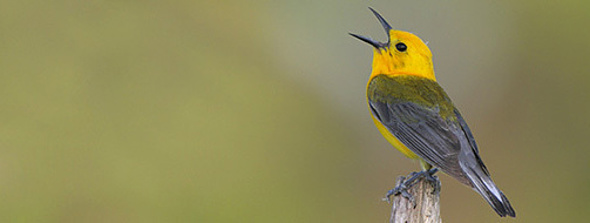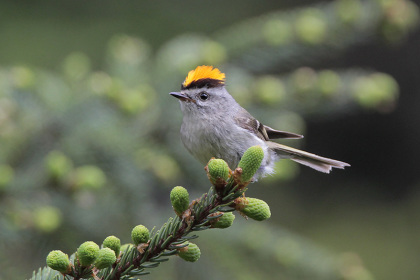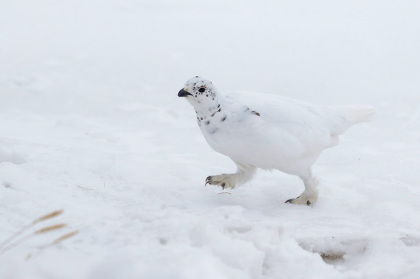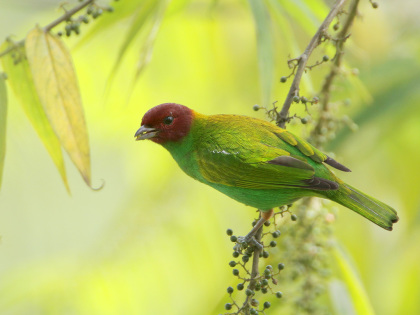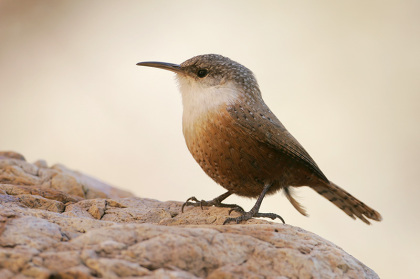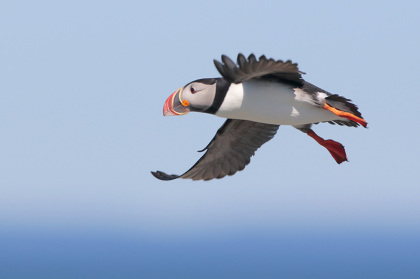Gear
You can probably use pretty much any camera to take photos of birds but I will make some suggestions here about what sort of gear will in my personal experience give the best results with the least amount of effort.
When choosing gear it is important to keep in mind that all camera gear is a compromise. What I mean is that though an 800mm lens and a top of the line camera body might be capable of producing the absolute best results, it is a very heavy and expensive setup to carry around and use. Not every bird photographer is going to be willing or able to lug such a rig around, much less pay for it. With this in mind it is worth considering how much gear you are willing to carry and how big your budget will be. Some people might be best served with a fixed-lens superzoom camera which is light and relatively inexpensive while others might do best with a digital SLR body with a long telephoto lens. Most of the people that I have interacted with have chosen to go the rout of an interchangeable lens system so I will focus on that type of gear for the remainder of this article.
The biggest advantage of interchangeable lens cameras (ILC’s) is that you can have specific lenses that are optimized for specific jobs. For bird photography these lenses are long focal length lenses. In my experience when it comes to gear for bird photography the lens is really the most important part of the equation and is the area where you should invest the largest portion of your gear budget. Pretty much any modern ILC can provide sufficient specs to obtain good bird photos though I recommend starting with a mid-range camera body and getting a decent telephoto lens to go with it. If you have to cut costs somewhere I suggest going with a lower end camera body and sticking with a decent lens.
As a general rule of thumb I find that for a bird photo to have the level of detail that appeals to me the subject (bird) should take up at least 20% of the frame before cropping. It is possible to get good results with less of the frame filled but I find the more I have to crop in to get my desired composition the more the quality of the final photo suffers.
This is the reason that focal length is so important.
At the lower cost end of things are telephoto zoom lenses like with focal length ranges like 70-300mm, 100-400mm, 150-600mm and so on. These lenses are usually relatively affordable in the $1000-2000 range and are relatively light to carry and offer decent magnification. These lenses are typically easy to use hand-held (without the aid of a tripod) The trade off is that the lenses typically don’t let in so much light so they will start to suffer in lower light situations such as on overcast days or under the forest canopy…
If you want to go all out you will probably be looking at a single focal length lens with a large objective such as a 400mm f/4, 500mm f/4, 600mm f/4 or 800mm f/5.6. These lenses are definitely specialty items and will cost quite a bit. They offer the benefit of letting more light in so they will perform better in lower light situations but they are big, heavy and expensive and often require the use of a tripod for best results.
These lenses can also be used along with teleconverters (TC’s) to increase the focal length even more. TC’s usually come in two varieties, 1.4x and 2x. Adding a 1.4x TC to a 500mm f/4 lens will increase the focal length to 700mm but will reduce the maximum aperture by one “stop” resulting in a maximum aperture of f/5.6. The 2x TC when added to the same 500mm f/4 lens will result in a doubling of the focal length but at the cost of two “stops” of aperture; 1000mm at f/8.
As a general rule I try to avoid using a 2x TC unless it is a special occasion because this much extra magnification tends to tax the autofocus system of the camera bodies I use. The 1.4x TC on the other hand works quite well and I don’t hesitate to use it when I need a little more focal length.
My personal setup is to use a 500mm f/4 lens and often a 1.4x TC. I also have found that I like to have a 100-400mm zoom lens available for situations where the 500mm lens is too much. Over the past several years this setup has served me quite well. I personally prefer the 500mm lens because it is small enough that it is relatively easy to travel with and it is light enough for me to use hand-held without too much effort. The 600mm and 800mm lenses are a bit too bulky and heavy for my taste as I would mostly be using them on a tripod and I find that to be a bit more restricting that I care for.
Ultimately the point of all of this is enjoyment, if the ideal camera rig is so heavy that it isn’t fun to take out then it really isn’t worth bothering with. Finding the right balance for you is very important. I find many people like to start out with one of the telephoto zoom lenses like the 100-400mm and spend time using it to develop their personal photographic style and later buy one of the bigger telephoto lenses that best fits that style.
